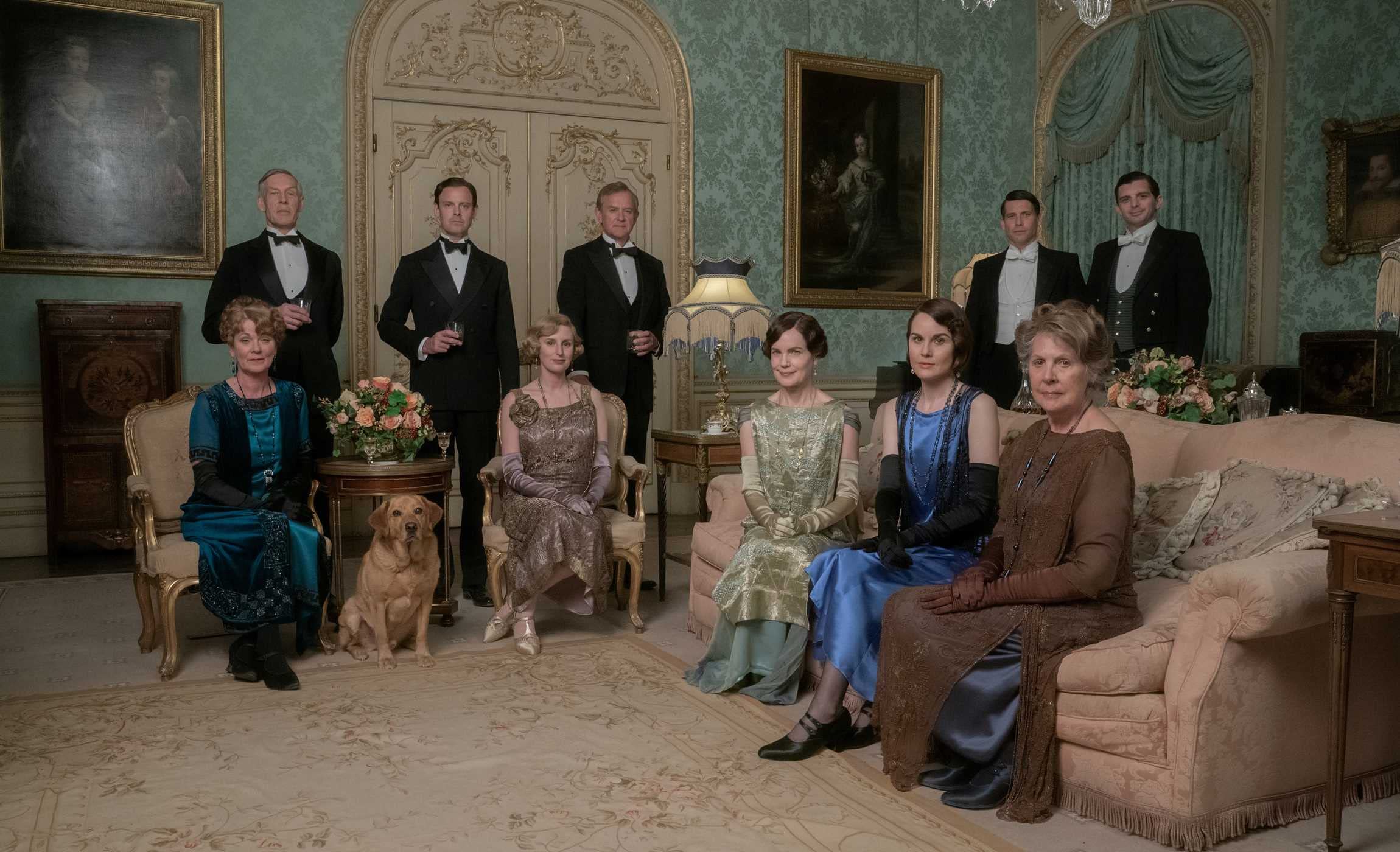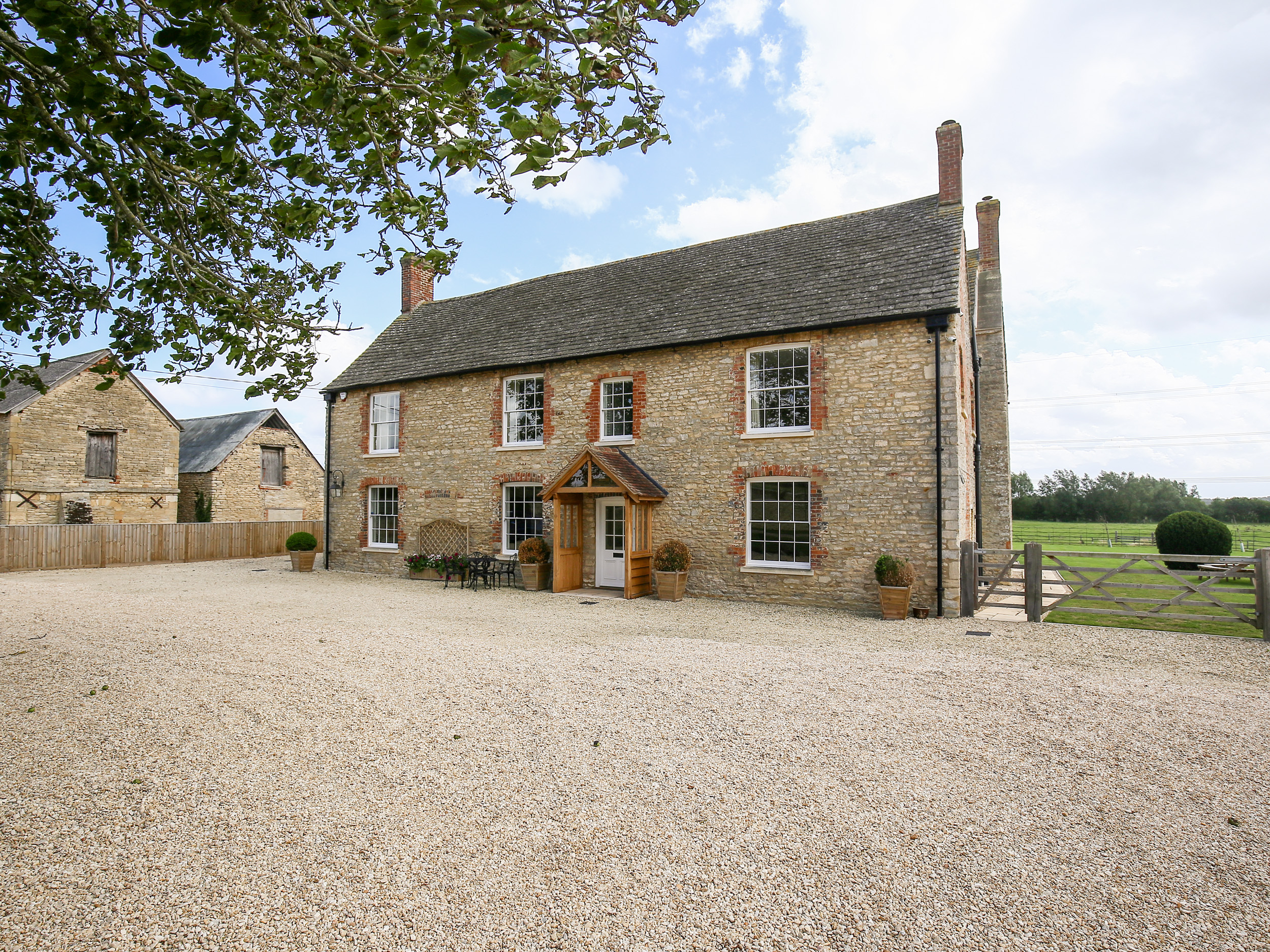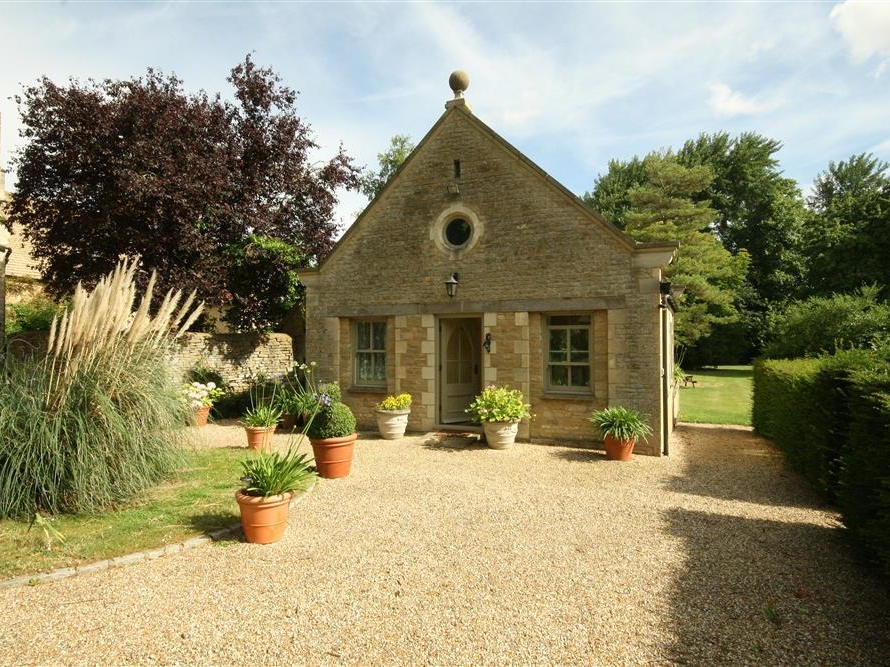Downton Abbey Village
A Stroll
Around “The Downton Mile”
Are you a big Downton Abbey fan? Do you fancy wandering the streets of Downton Abbey village?
Well, you can, and this gentle walk passes at least eight sights where some significant scenes were filmed! This is a great day out for all Downton Abbey fans and is a chance to immerse yourself in the aristocratic life of the Crawley family and their servants.
Although the Downton Abbey story is set in the area around Ripon and Thirsk in Yorkshire, the actual filming location of Downton village is the characterful Oxfordshire town of Bampton.
Some of the Cast of Downton Abbey and Link to Downton Abbey The New Era on Amazon
A local walk called “The Downton Mile” lets you walk in the footsteps of your favourite characters, and explore Bampton and the most significant buildings and streets used for filming. The walk has been designed to raise money to help pay for the repairs to Bampton Library and the organising charity have worked out that if 71,527 one-pound coins were laid edge to edge the distance from start to finish would be one mile. I haven’t checked their sums, but all they request is that us fans who visit the Downton Abbey village donate £1 to help save their library, which was used as one of the film locations and is therefore part of the Downton Abbey story.
Since most of the points of interest are located around the church, you don't even have to walk the whole mile. But I’m sure most fans would love to wander around Bampton and breath in the Downton air!
If you fancy making your day out even more different, then why not visit over the late May bank holiday weekend. Bampton is famous for its Morris dancing traditions and the Bampton Day of Dance festival celebrates this history.
A Short History of Bampton
Bampton is a lively Cotswold town with a long history going back to a large Anglo-Saxon settlement with a royal manor and a church. The town was mentioned in the Doomsday Book of 1086, in which it was noted that it had a market.
During the reign of King Edward II, Aylmer de Valence, the Earl of Pembroke, was given licence to fortify his house and create Bampton Castle. Only small sections of the castle remain and are incorporated into a private property called Ham Court. Historians have suggested the castle may have been destroyed by Oliver Cromwell after a siege in 1645.
After the Civil War, Bampton's fortunes rose. The town grew prosperous through first the wool trade, and later textiles and leather goods. With money to spend, the townsfolk started building. It's these seventeenth and eighteenth century properties that give Bampton its old-world charm - as you'll see when you walk through Downton Abbey village following “The Downton Mile”.
Lord Grantham and Lady Mary and Link to Downton Abbey The New Era on Amazon
Let’s Walk Around Downton Abbey Village
Before starting the walk could we please ask fans to be polite and courteous to the people of Bampton. Several of the film locations are private residences so please respect people’s homes and privacy.
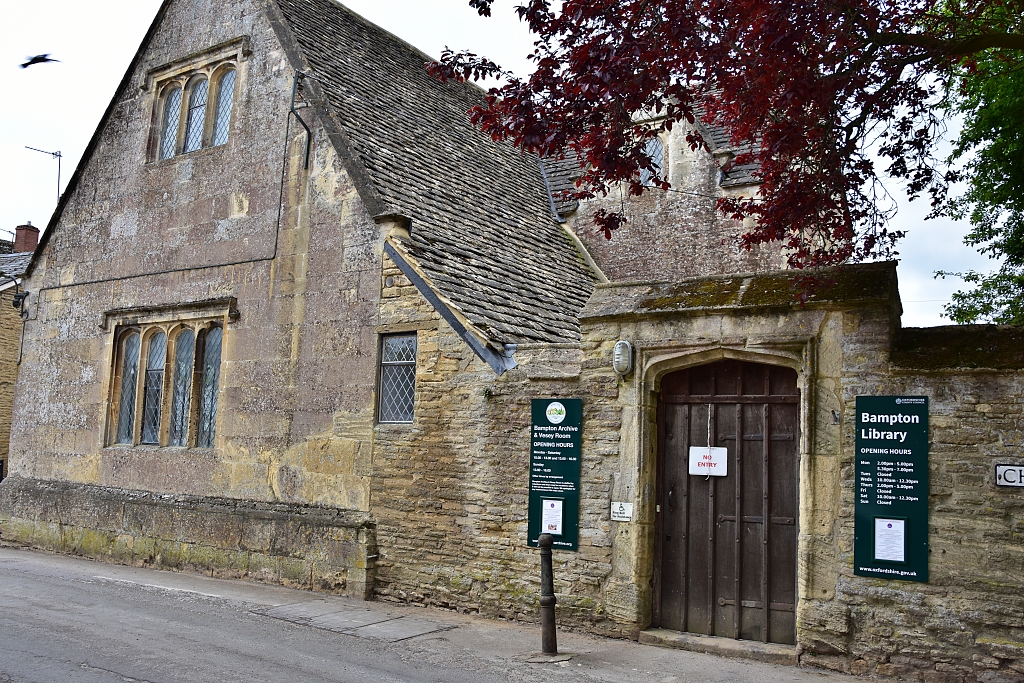 Downton Cottage Hospital © essentially-england.com
Downton Cottage Hospital © essentially-england.comThe Downton Mile walk starts from the corner of Church View outside Bampton Library, or - as it was in the Downton Abbey village - Downton Cottage Hospital. This is where Dr. Clarkson and Isobel Crawley looked after the injured soldiers from the First World War. It is also where Lady Sybil was taken when she became ill.
The seventeenth century building - designed and built by Robert Vesey - was originally The Old Grammar School. It is still owned by a trust he set up at the time. The building is in need of repairs, so please donate when visiting their Downton Abbey village display.
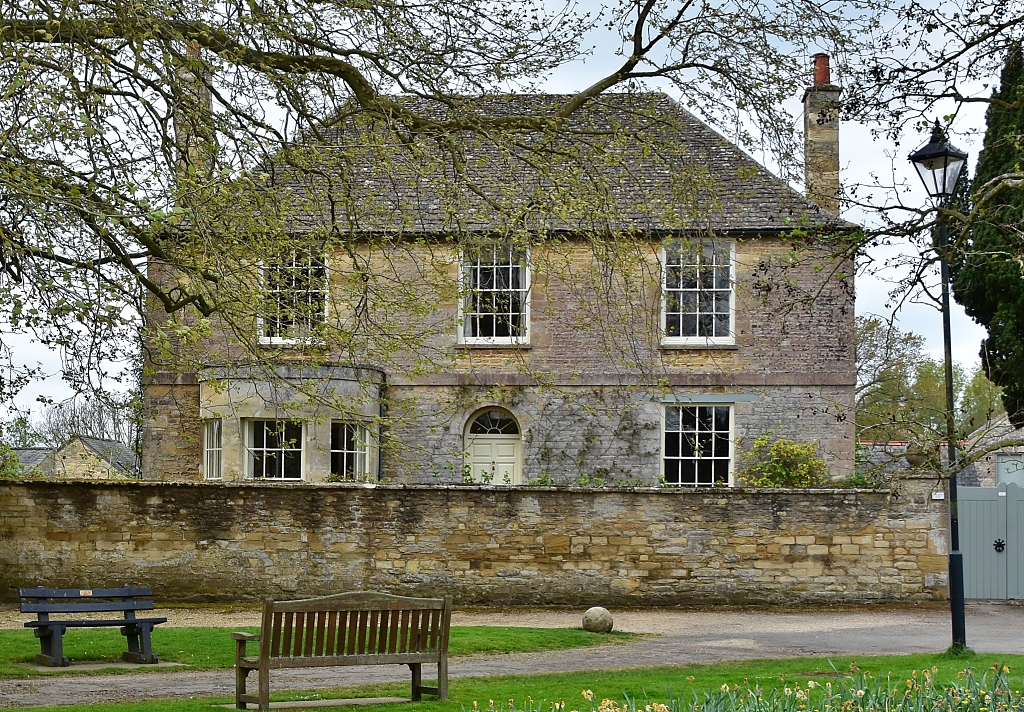 Mrs Crawley's House © essentially-england.com
Mrs Crawley's House © essentially-england.comWalk along the wall towards the large tree on the green and stand in front of Churchgate House. You may recognise the exterior of this house as the home of Isobel Crawley. This location was used in many scenes including the characters Matthew Crawley, Lord, and Lady Grantham, Mr. Molesley and Mr. Carson. This house was only used for exterior scenes.
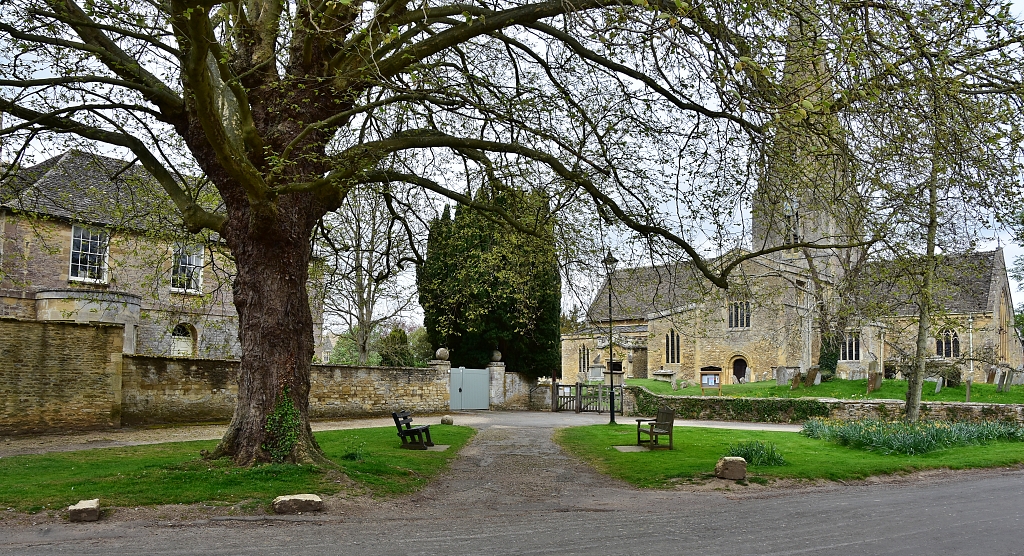 Downton Abbey Village Green © essentially-england.com
Downton Abbey Village Green © essentially-england.comYou’re probably standing on Church Green looking at Churchgate House. The green was regularly seen in Downton Abbey as family and servants passed by or held conversations here. In real life it feels a lot smaller than I imagined, perhaps the film producers had previously worked on Dr. Who and made use of his TARDIS!
In the first series, the village fair was held on this green, and later in the series the Downton War Memorial was situated here.
Back to real life again, as back in May 2011 Prince Charles also stood here after he attended celebrations in the village!
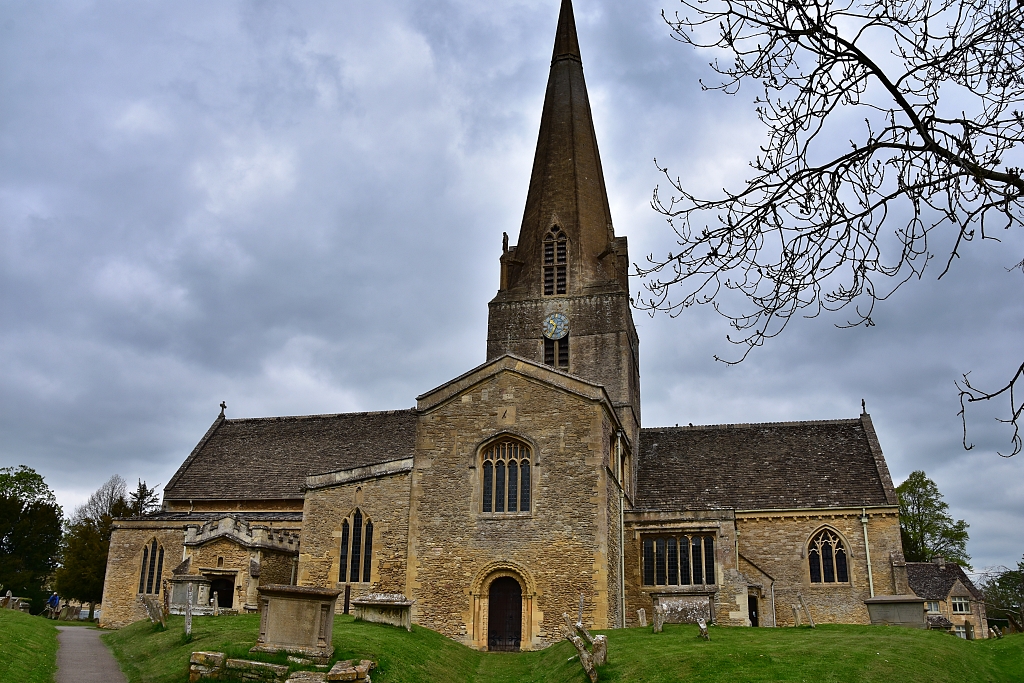 Bampton's St. Mary the Virgin Church
Bampton's St. Mary the Virgin Church © essentially-england.com
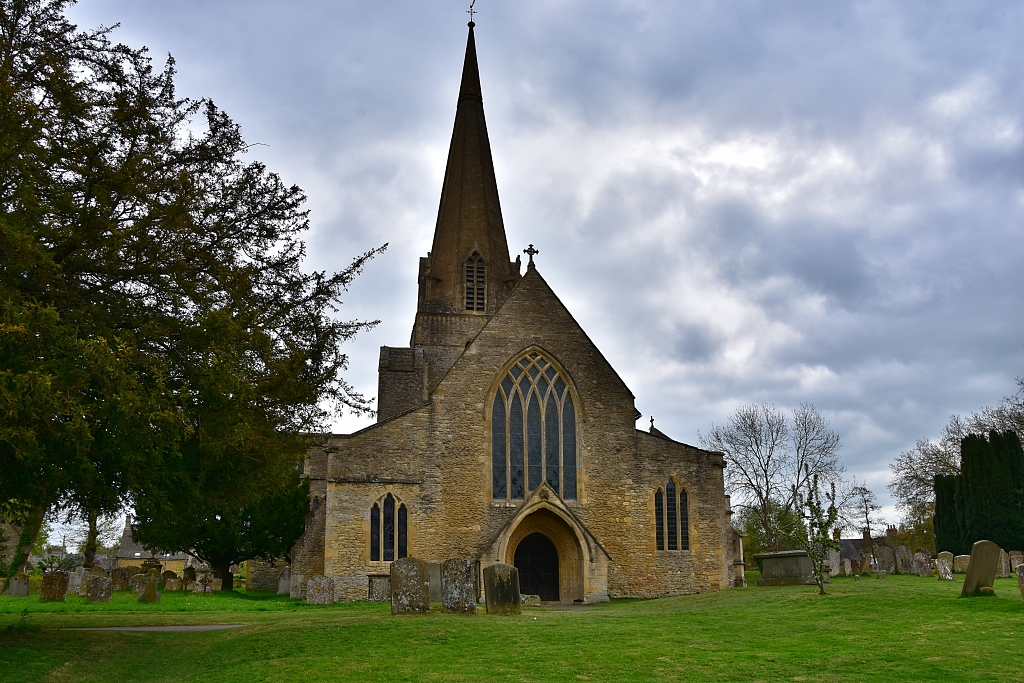 Downton's St. Michael and All Saint's Church
Downton's St. Michael and All Saint's Church © essentially-england.com
Pass through the church gate and into the grounds of St. Mary the Virgin Church. This is probably the most famous Bampton landmark, and was called St. Michael and All Angels Church in the series. Many dramatical scenes were filmed inside and outside of the church and include the marriage of Mary and Matthew, Anthony Strallan jilting Lady Edith at the altar, and the burial of Matthew Crawley’s fiancée Lavinia. The church is usually open to visitors and is well worth a look inside.
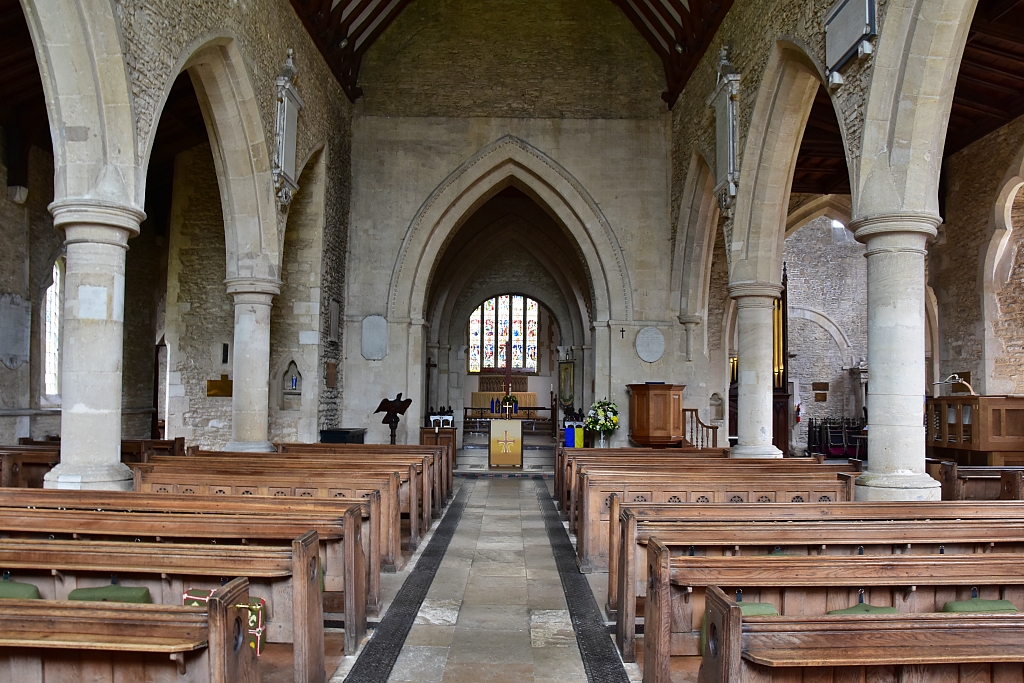 View Towards the Altar
View Towards the Altar © essentially-england.com
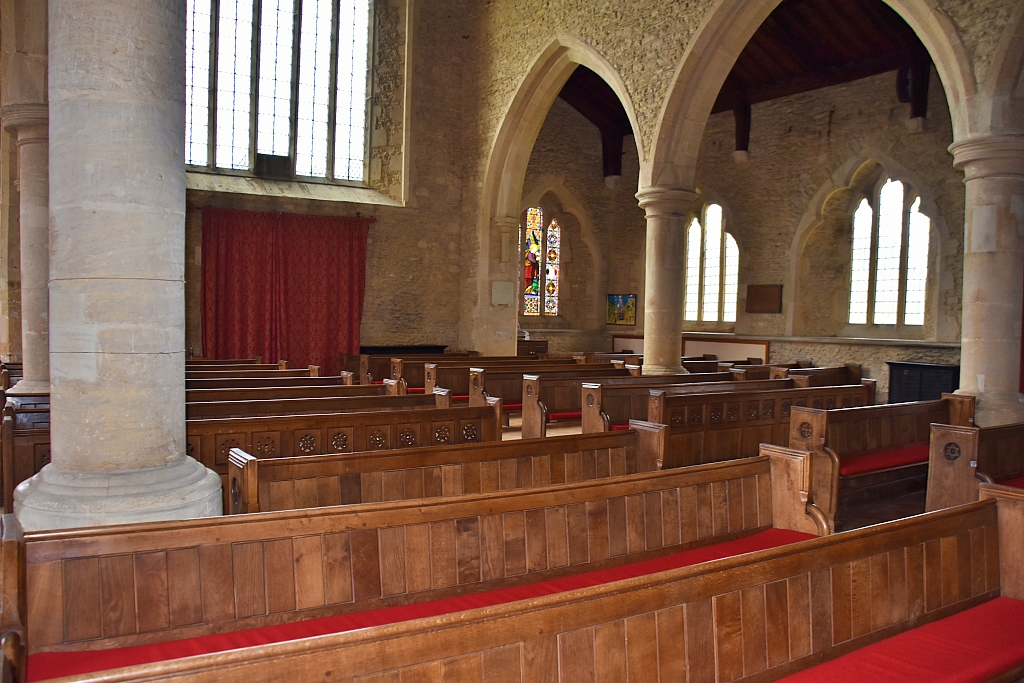 View Towards the Main Door (behind the curtains)
View Towards the Main Door (behind the curtains) © essentially-england.com
Continue along the path through the church grounds to exit on the opposite side in Church Close. Turn left and follow the close round into Landells and to the junction with Broad Street.
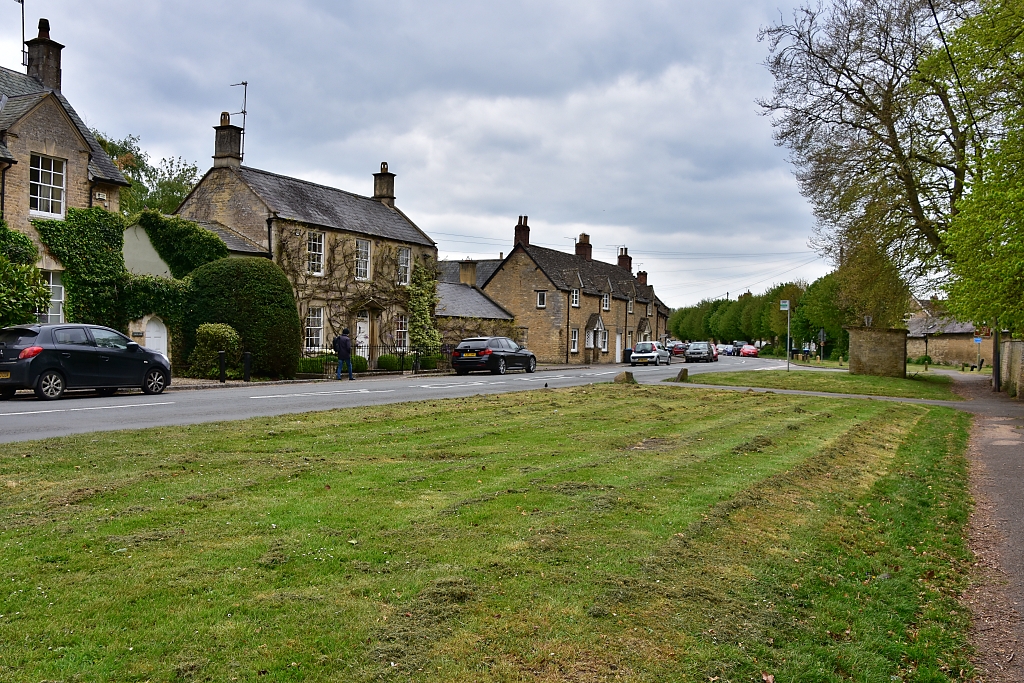 Broad Street in Bampton - Part of the Downton Mile © essentially-england.com
Broad Street in Bampton - Part of the Downton Mile © essentially-england.comTurn right, and after about 50 metres turn right again into Church View. The road slowly bends left and shortly after Church Close splits off to the right are a pair of Cotswold stone houses opposite the church.
The first house was The Grantham Arms pub that was used many times during the series. It’s amazing how the film producers can take someone’s nice house and make it look so pub-like that it fools us viewers!
Notable scenes include Lord Grantham offering Tom Branson money to leave the village, and Lady Sybil and Carson putting up Alfred here to try and stop the jealousy brewing between Ivy and Daisy.
The other house attached to this one was Lamont’s Poultry Merchant, but doesn’t get too much time on screen.
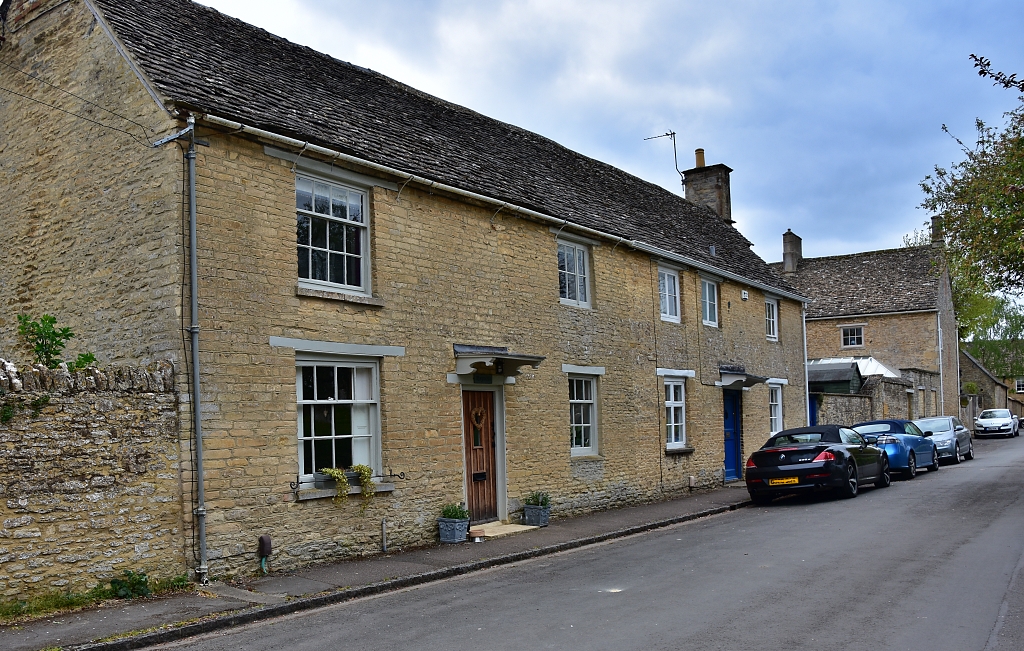 The Grantham Arms and Lamont's Poultry Merchant in Downton Abbey Village © essentially-england.com
The Grantham Arms and Lamont's Poultry Merchant in Downton Abbey Village © essentially-england.comFollow Church View and just after passing the library (our start/finish point) on this figure of eight route is The Downton Post Office. It’s the first house on the right. The post office appeared in many Downton Abbey episodes and was run by the postmistress Mrs Wigan. The house had a small sign above the righthand window and a notice board next to the window. The interior scenes were filmed elsewhere. Probably the most notable scenes were Rose putting a card in the window advertising for a lady’s maid and Edna then going in to ask Mrs Wigan about the job.
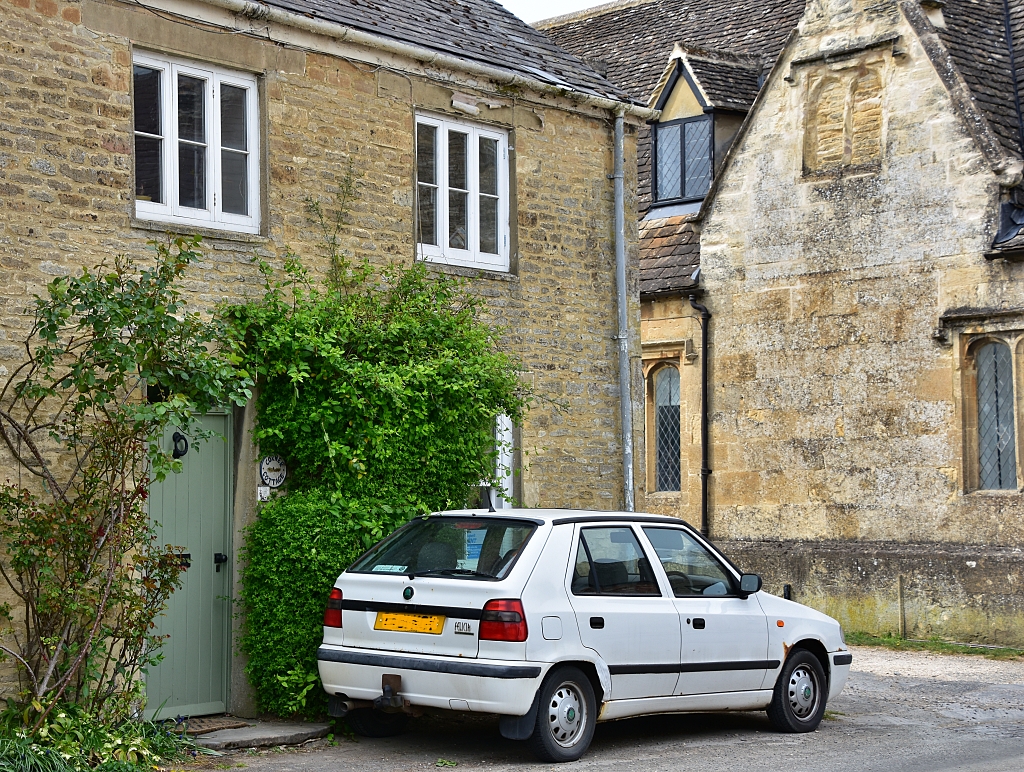 Downton Post Office
Downton Post Office © essentially-england.com
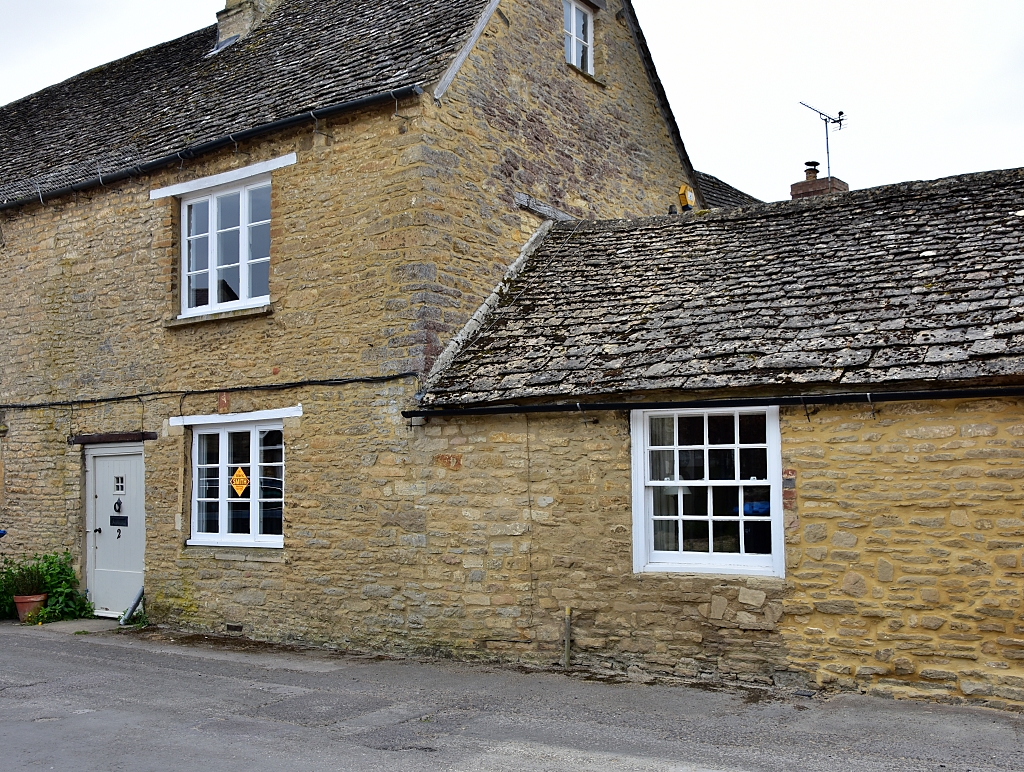 The Dog and Duck in Downton Abbey Village
The Dog and Duck in Downton Abbey Village © essentially-england.com
Just a few houses along on the righthand side is the house that was used as The Dog and Duck pub. It was only used once, and it is where Carson meets his old showtime friend Charles Grigg. Again, the film producers tricked us and made this home look so pub -like! Only exterior scenes were filmed here.
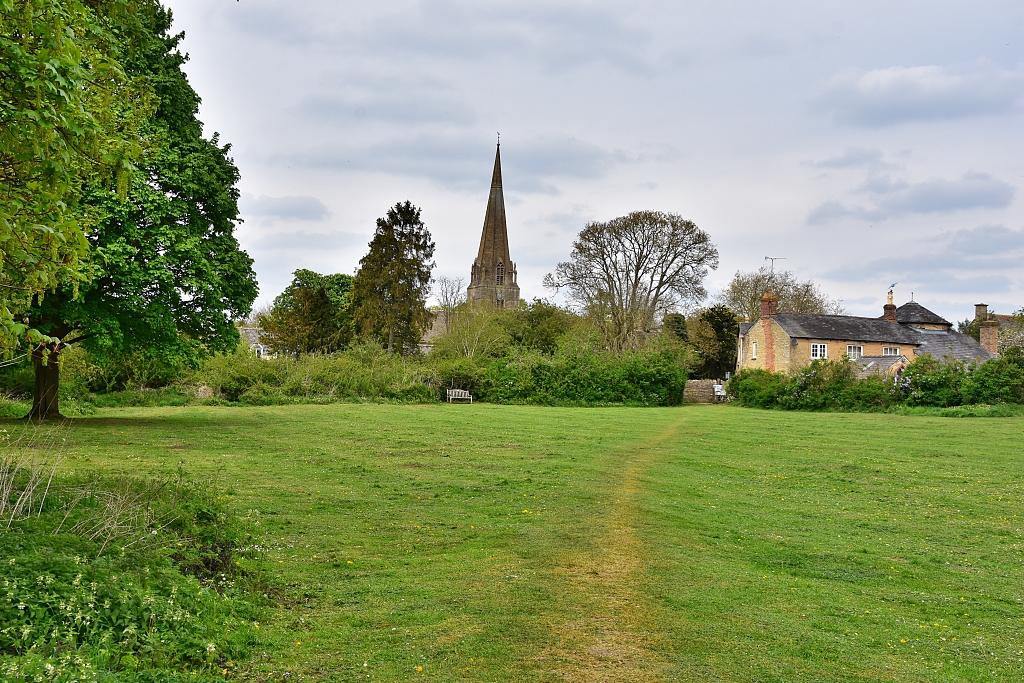 Near the Finish of the Downton Mile © essentially-england.com
Near the Finish of the Downton Mile © essentially-england.comOur walk continues all the way to the junction with Bridge Street where the route turns right, passing some thatched cottages on your left. Continue until the road crosses the Shill Brook and take the footpath on the right after Bridge House. Keep to the footpath that runs alongside the brook on your left, through a kissing gate, and then diagonally across a field to another kissing gate. The footpath continues along the edge of some gardens until it joins a road, where we turn right and walk back towards the library and our finish point.
Mrs Patmore at Work in the Kitchen and Link to Downton Abbey The New Era on Amazon
I hope you enjoyed strolling around Downton Abbey village as much as we did. We would definitely recommend exploring the rest of Bampton while you're here. And if you want to explore a little farther still, then I recommend walking down to and along the River Thames, which isn't too far away. That's what we did, and I'll write about that another day.
Holiday Cottages around Bampton (Downton Abbey Village)
This is a lovely part of the country to visit, and I can say that with confidence, as we lived just down the road in Lechlade-upon-Thames for sixteen years. Bampton was on one of my most favourite cycle rides, I even called the route “My Favourite Road” as there was one road I particularly enjoyed cycling along.
The area also has some more Downton Abbey film locations and are included with even more locations on our Downton Abbey road trip page.
Has this given you a taste of Downton Abbey? If so, why not read about our Downton Abbey road trip, where we visit a number of different film locations and throw in some special treats.
Click here to return to our home page.
